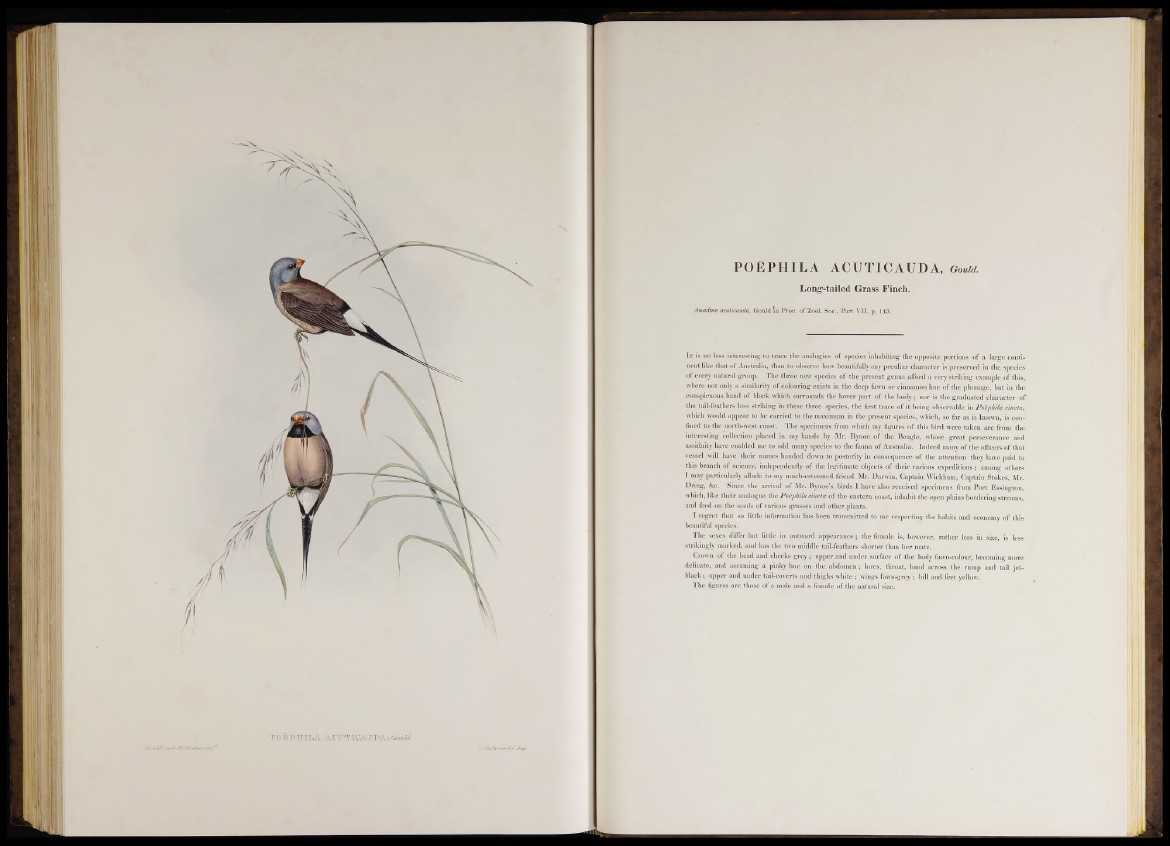
POËPHILA ACUTICAUDA, Gould.
Long*-tailed Grass Finch.
Amadina acuticauda, Gould in Proc. of Zool. Soc., Part VII. p. 143.
I t is no less interesting to trace the analogies o f species inhabiting the opposite portions o f a large continent
like th at o f Australia, than to observe how beautifully any peculiar character is preserved in the species
o f every natural group. The three new species o f the present genus afford a very striking example o f this,
where not only a similarity o f colouring exists in the deep fawn or cinnamon hue o f the plumage, but in the
conspicuous band of black which surrounds the lower p art of the b ody; nor is the graduated character of
the tail-feathers less striking in these three species, the first trace o f it being observable in Po'ephila cincta,
which would appear to he carried to the maximum in the present species, which, so far as is known, is confined
to the north-west coast. The specimens from which my figures o f this bird were taken are from the
interesting collection placed in my hands by Mr. Bynoe o f the Beagle, whose great perseverance and
assiduity have enabled me to add many species to the fauna o f Australia. Indeed many o f the officers o f that
vessel will have their names handed down to posterity in consequence of the attention they have paid to
this branch of science, independently of the legitimate objects o f their various expeditions ; amono- others
I may particularly allude to my much-esteemed friend Mr. Darwin, Captain Wickham, Captain Stokes, Mr.
Dring, &c. Since the arrival of Mr. Bynoe’s birds I.have also received specimens from P o rt Essington,
which, like their analogue the Poephila cincta o f the eastern coast, inhabit the open plains bordering streams,
and feed on the seeds of various grasses and other plants.
I regret that so little information has been transmitted to me respecting the habits and economy o f this
beautiful species.
The sexes differ but little in outward appearance; the female is, however, rather less in size, is less
strikingly marked, and has the two middle tail-feathers shorter than her mate.
Crown of the head and cheeks g r e y ; upper and under surface o f the body fawn-colour, becoming more
delicate, and assuming a pinky hue on the abdomen; lores, throat, band across the rump and tail jet-
black ; upper aud under tail-coverts and thighs wh ite; wings fawn-grey; bill and feet yellow.
The figures are those of a male and a female o f the natural size.